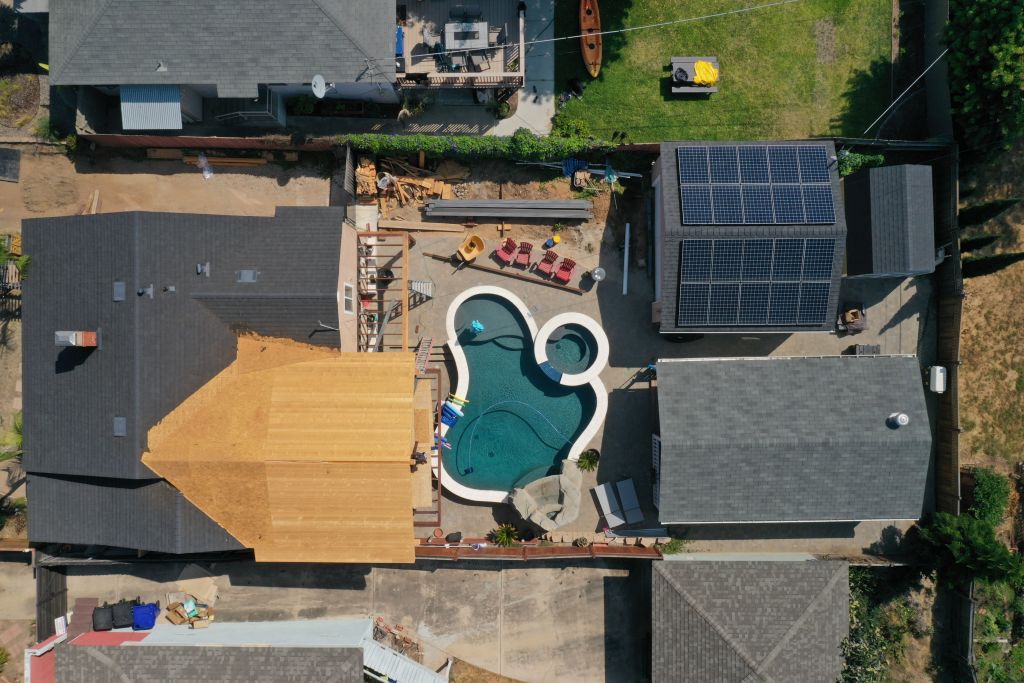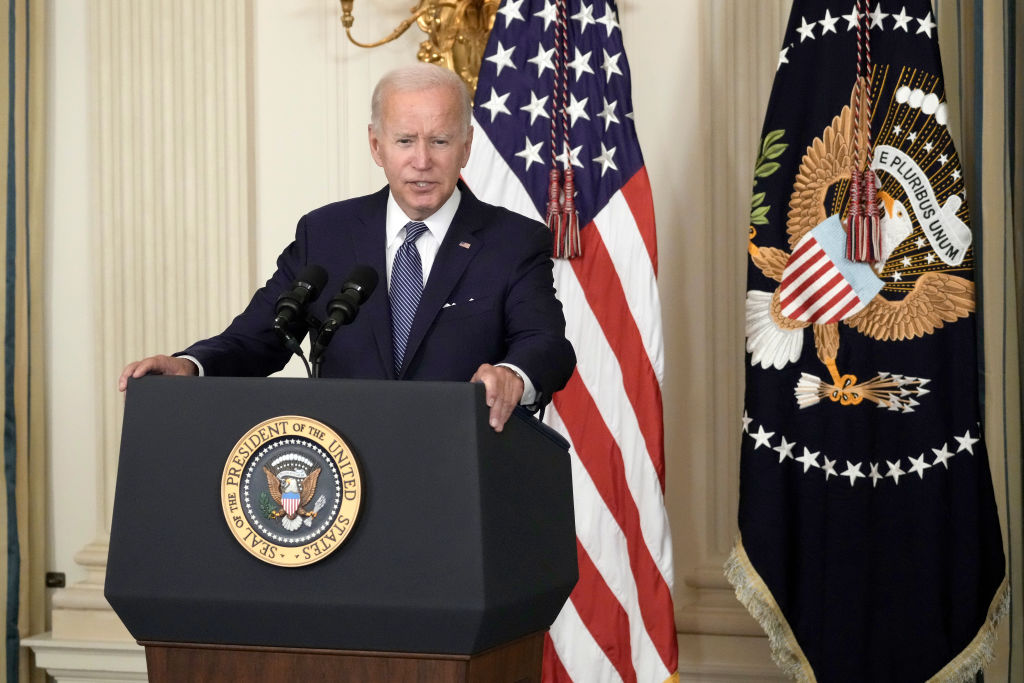
The American economy is already tilted in favor of homeowners. They have the stability of knowing how much they’ll pay for housing every month, they can deduct the interest on their mortgage on their taxes, and they are building wealth by simply owning a home.
Now, U.S. climate policy may tilt the scale even further towards homeowners through the Inflation Reduction Act, which allows Americans to claim credits on taxes by making their homes more energy-efficient, beginning with their 2022 taxes, which are due on April 18.
The IRA, the Biden administration’s signature climate legislation, offers up more than $10 billion for consumers in the form of tax credits and rebates through housing upgrades and new and used electric vehicle purchases. It includes tax credits for homeowners who install solar panels, geothermal heating and cooling technology, heat pumps, or energy-efficient windows or insulation.
Of course, it’s smart to incentivize homeowners to reduce their energy consumption—they are the ones with money to spend, and the U.S. needs to electrify homes and buildings to decarbonize. But because the IRA incentivizes upgrades that can primarily be used by homeowners, it creates a situation in which energy-efficient homes will pay less than their share for maintenance of the grid—while renters and homeowners without these upgrades will pay more. Unless we change the way utility bills are calculated in America, the more homeowners take advantage of the Inflation Reduction Act, the more that the costs of paying to maintain the electrical grid will begin to fall to those who can least afford it.
Read More: The New Climate Taxes That May be Closer Than You Think
This has implications for American inequality, which has finally been lessening in the last few years after decades of growing more extreme. A little more than one-third of Americans are renters, but census data shows that about half of households in the lowest income quintile and 42% in the second-lowest are renters. Just 13.8% of households in the top income quintile were renting, by contrast. Three-quarters of white households own their homes, while only 45% of Black households do.
Though renters could take advantage of some of these tax credits and rebates, they are practically more accessible to homeowners. An IRS provision for the tax credits, for example, states that the homes being upgraded have to be used as a residence by the taxpayer, meaning a landlord couldn’t install solar panels and then get a tax credit for those panels if they do not live in the residence.

A tax credit in general favors wealthier people who owe money on their taxes, since it essentially allows them to lower their taxable income. If someone only owes the IRS $1,000—or doesn’t owe anything at all—they can’t claim the tax credit, while someone owing $6,000 could easily claim the credit. “Tax credits do largely favor higher-income households,” says Jamal Lewis, the director of policy partnerships and equitable electrification for Rewiring America.
The IRA nods towards the problematic nature of tax credits by offering point-of-sale rebates on certain items. These rebates, structured so that people don’t have to spend a lot of money upfront, allow big discounts on electrification projects like heat pumps, electric stoves, and added insulation. Low- and medium-income Americans can get more money in those rebates than people with higher incomes. But the nature of what the rebates cover again favors homeowners: buying an electric stove or heat pump isn’t something that most renters are likely to do, as almost all of these technologies require installation that you have to pay for yourself. Renters don’t benefit from a home’s increased value from having climate tech, since they don’t own the house to sell it. And heat pumps, induction stoves, and insulation would be very hard to bring along when a renter moves.
What’s worse, as homeowners install solar panels and make their homes more energy-efficient, renters and lower-income households will have to bear more of the brunt of paying to maintain the grid—which means as solar homeowners’ bills get lower, everyone else’s will get higher. This is because of the way utilities are billed in most of America.
Picture a homeowner who gets tax credits to install solar panels and more efficient windows. This homeowner’s solar panels will generate electricity, which gives them credits on their energy bill. Because most utilities calculate charges based on how much energy a customer is using, homeowners with solar panels will pay less—even though they’re still using the grid, and even though the grid and transmission lines are going to need billions of dollars in upgrades as we electrify America. Since utilities have fixed costs, if homeowners with solar panels are paying less, the rest of us are paying more.
Read More: Inflation May Make People Less Likely to Back Climate Policy
Just take a look at your electricity bill—you usually have at least two separate charges, one for the amount of electricity you used in a given month, and one for the delivery of that electricity, which goes toward maintaining the grid. In most states, that delivery charge is calculated based on how much electricity you use. If your solar panels lower your energy usage, you’re paying less for energy—and you’re also paying less towards the overall grid maintenance.
That system made sense when we first started sending out electricity bills more than a century ago, says Christopher Knittel, a professor of energy economics at MIT. Back then, if you were using more electricity, it probably meant you had a bigger house and more lights and appliances that used electricity. But in a world with more solar panels on homes, this system means that people with energy-efficient homes can pay almost nothing in maintenance charges. Or they can leave the grid entirely, leaving the burden of paying for electricity on fewer households—the ones who don’t have the resources to climatize their homes.
This is already happening to some degree. Mark Jacobson, a Stanford professor who built a new home in Santa Clara County, California, told me last year that he hadn’t paid an electric bill in five years thanks to his use of renewable energy. Meanwhile, electricity prices have soared for people in the lower-income Central Valley.
“Lower-income households are going to be living in less energy-efficient homes, using less energy-efficient appliances, and also not having their own sources of energy generation,” Knittel says.
One way to reverse this dynamic while still incentivizing climate investments would be to change the way electricity bills are calculated, Knittel says. Utilities could charge for the amount of energy households use and then charge everyone on the grid a flat fee for maintenance. Another solution could be states levying a flat tax for all residents that goes to maintaining the grid.
Overall, changing so-called “net metering,” in which solar energy system owners are credited for the electricity they add to the grid, could make electrification more equitable. But the idea of changing net metering is already causing heated debate.
Net energy metering, which is still used by most utilities, “is outdated and created undue economic burdens for non-participants,” the Edison Electric Institute, which represents investor-owned electric companies, wrote in a letter to the National Academies, which is studying net metering at the behest of Congress. Meanwhile, the Center for Biological Diversity, a nonprofit environmental group, argued in a March report that net metering “is good for people and the planet” but that “monopoly utilities want to kill it.”
While there aren’t many climate products that could be easily used by renters, as so many of them require skilled installation, it is a growing market. Gradient, for example, is a heat pump and cooling system that hangs over a windowsill and doesn’t block the window view. (The Gradient, which looks almost like a bench you’d hang on a windowsill, was featured on TIME’s Best Inventions of 2022.)
“We believe that if we’re going to build climate solutions, they should help the people who are being affected by climate change today, which is often low income, older multifamily buildings, often renters,” Gradient’s CEO, Vince Romanin, told me. “If we’re only making rich people’s lives easier to get heat pumps, it’s going to really bifurcate the climate debate.”
Read More: Italy Wants to Ban Cultivated Meat. That Would be a Big Climate Problem
As of right now, though, renters can’t use government rebates to buy the Gradient. The devices are currently classified as room air conditioners with reversing ability, not as heat pumps, and there are no existing product efficiency standards designed for window-unit heat pumps, according to Rewiring America, a nonprofit focused on electrifying communities. The IRA rebates have to be used for devices that meet efficiency standards from The Center for Energy Efficiency (CEE) and EnergyStar, but since the Gradient is a window-unit heat pump, neither group has developed standards for it. Lewis, of Rewiring America, says there’s a simple fix by which either the Treasury Department or Department of Energy designates these portable units as heating systems, but neither has done so yet.

Of course, policymakers were aware of these potential problems and did try to write in certain solutions to the IRA. The act includes funding for climate efforts in affordable housing projects and money for addressing environmental justice issues in low-income communities. The IRA also features grants for community solar and energy storage in low-income communities. Low-income households can get $1,600 for weatherization improvement projects like air sealing under the IRA, and states can pass laws requiring multifamily building owners to make energy improvements, setting building performance standards, as Colorado did in 2021.
And the fact that point-of-sale rebates were included in the bill, rather than just tax credits, make it more equitable than past legislation. But the U.S. is in the middle of a giant energy transition that could accelerate inequality faster than lawmakers can act. By using all the provisions of the IRA, for instance, wealthy homeowners could go off the grid entirely and become self-sufficient, not contributing to power generation—and not paying for it either.
That’s not a likely scenario—yet, says Marilyn Brown, a professor of sustainable solutions at Georgia Tech. But some experts warn that if energy continues to become more expensive—perhaps because fewer people are bearing the costs—more people could defect from the grid, causing a utility death spiral.
“When they go off the grid, that’s a whole other calculation, they’re just supporting their own needs,” she says. “But I don’t see that happening now. Maybe in 10 or 20 years.”
More Must-Reads from TIME
- How Donald Trump Won
- The Best Inventions of 2024
- Why Sleep Is the Key to Living Longer
- Robert Zemeckis Just Wants to Move You
- How to Break 8 Toxic Communication Habits
- Nicola Coughlan Bet on Herself—And Won
- Why Vinegar Is So Good for You
- Meet TIME's Newest Class of Next Generation Leaders
Contact us at letters@time.com